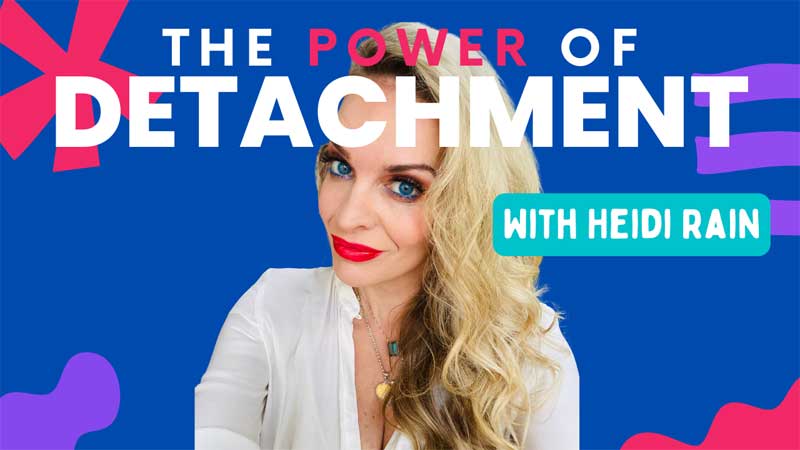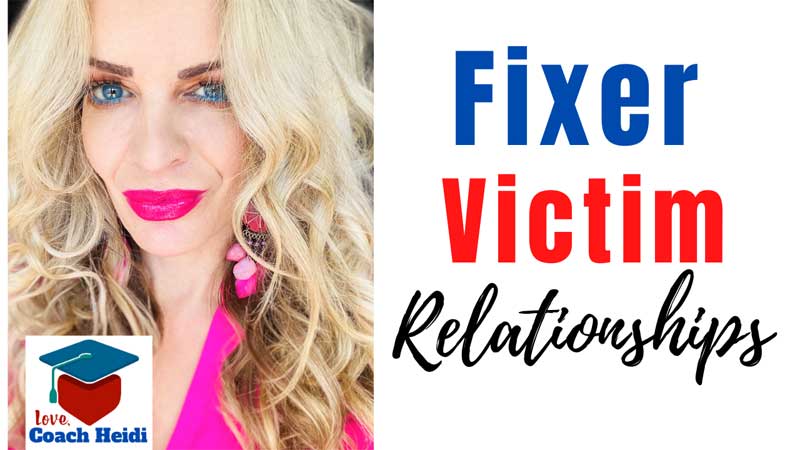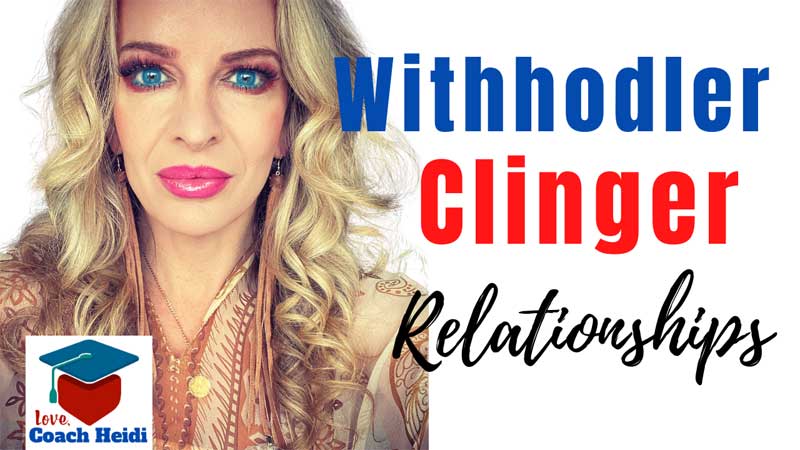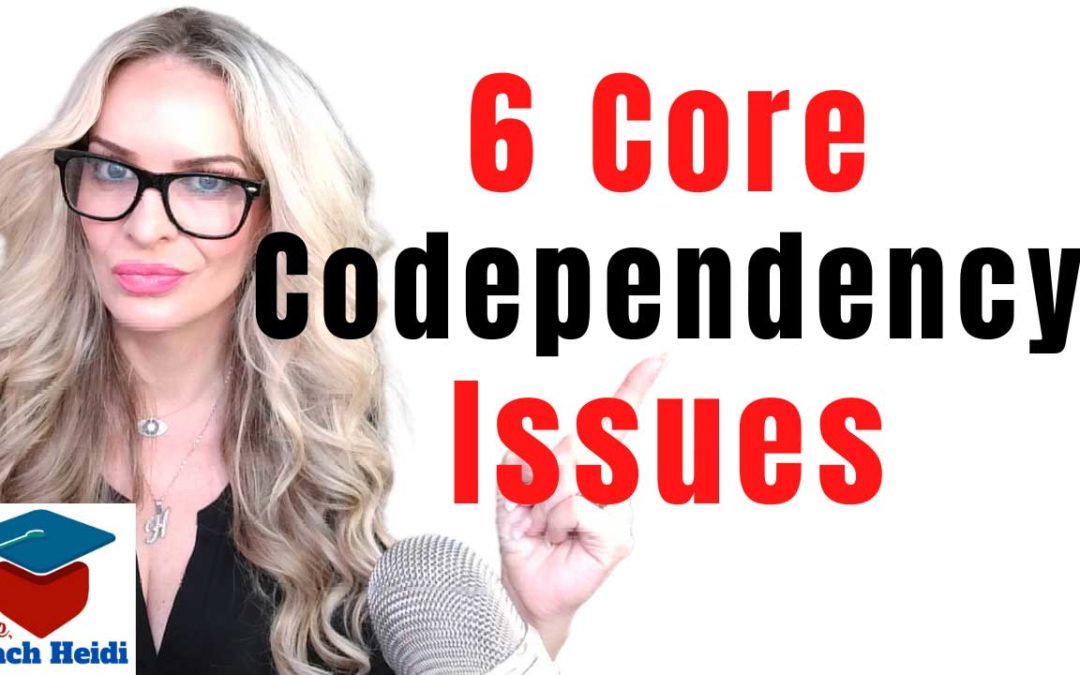
The Power of Detachment
*This is a video transcription, please pardon any miscellaneous annoying stuff that should have been edited out but we don’t have that kind of time around here.*
I was driving my daughter to school this morning and she asked me to put the top down on the convertible. I was like, heck yeah! Let’s put the top down. It was a beautiful morning here in Florida so I put the top down and we’re driving to school. She’s playing her favorite songs and we’re rocking out. I dropped her off and I was driving down the highway and I started speeding up. I was going kind of fast down the highway and the wind was in my hair. I was listening to this song about being unstoppable and having all this power from within. I’m going to tell you at that moment, I felt free. I was like, yes. I’m driving down, the wind’s whipping. I just thought, man, this is my life now. This is my life.
I’m driving down the highway, and not the car. Okay. Not all that stuff. But the internal feeling of completely being in my power, in that car with the wind whipping my hair and feeling that total sense of freedom. I’m talking financial freedom, emotional freedom, psychological freedom, spiritual freedom, the freedom to be me down that highway. I thought, oh my God. I have come freaking far. A very far way. It’s a far cry from the person that I used to be, who had moments of feeling free in my life. Moments of having that type of power, but they were fleeting because it was always clouded by this intense inner critic that was constantly judging me. Telling me, well, you’re not really enough. You’re not really as good as you think you are, or who do you think you are? And so on and so forth.
So I would find that even though I was successful, there was this always self-sabotage loop running behind me where I’d be successful in one area in my life, but here my relationships would be terrible and they would suck. I would be in one-sided relationships where I would pour all my resources and energy into somebody else and they would take it from me. But then at the end of the day, I felt rejected or unseen. Not heard, not valued, not respected, not cherished, certainly not treasured, and all the things I wanted to feel. It would be so hurtful for me. I’d be in these relationships that were confusing for me. I didn’t know from one minute to the next, should I stay. Should I go?
That’s certainly not that feeling of freedom that I’m describing driving down the highway with the top down in the convertible and the wind whipping in my hair. Knowing that I’m happily married to my rock star husband. That I have this beautiful daughter that I’m taking to school who’s making me laugh the whole way. That I’ve created a business that I love. That I have a mission and a purpose that I get to live out in my heart every day. That I’m content. That I am finally financially secure that I don’t have to worry from one minute to the next. I mean, it wasn’t too long before where I’d be worried about running out of gas and driving in neutral downhills just so I could save the gas to be able to get up the hill. That was my life for a really long time.
I asked myself a question, what was the one thing that I mastered?
There are many things that I had to learn along the journey. But what’s the one thing that I mastered that really helped me the most in my life to get from a person who was insecure, constantly self-destructive, drinking and isolating and not happy in her relationships, struggling and stuck, to this person today who is fully in her power and completely free. How did I get there? Now, I’m going to share that with you today. What I’m going to talk about you might think is pretty simple. It is a very simple concept because I’m a simple girl. I do not like to make things complicated. I like to take complicated things and make them very easy. That’s a gift that I have.
So what I’m going to talk to you about is simple, but it’s not easy for us to do. That is the concept of detachment. So that’s the thing that we’re going to be talking about today. I’m super excited to dive into that with you. Before I do, I want to take a moment to say, thank you so much for all of your love and comments. They absolutely mean the world to me. When you participate in this community, your voice is heard. Other people are seeing your comments and what you have to say. We’re building a community of like-minded warriors who are on the healing path to wellness and wholeness. Those of us, who want to create relationships that we truly deserve, create lives that are full of happiness. Those of us that are asking ourselves the question not how bad does it have to be?
Or how bad can we stand it in our lives? Because you’ve been through a lot, and so have I. But the question becomes, how good can I let it get? As I’m driving my convertible down the highway, full tilt boogie, I’m thinking, man, I can even let it get better than this. I know I can. I want the same for you. So if you’re interested in that, let me tell you that this message is brought to you by Heidi Rain, me, and all of the programs that I have to offer you on your healing journey. If you’re interested in any of those programs or courses, you can go over to HeidiRain.com and check them out. We offer a wide variety of programs. Our Toxic Relationship Recover is one of our most powerful programs that we have. We also have a Family Addiction program where we walk you through. Get answers now. Know exactly what to do when you’re dealing with an addict or an alcoholic in your life.
We have that program as well. Plus retreats where you can be with me on a weekend where we come together and I pour into you. We spend lots of time together, one on one. Many ways that we can spend time together. So I want to talk about this idea of detachment today. Again, very simple but complicated in order to really grab a hold of. So if you can grab a hold of this and really practice it as a spiritual practice in your life, right? The greatest gap in life, like many, have said. I heard it from John Maxwell and I think he heard it from somebody else.
The greatest gap in life is between knowing and doing. I often share information that people say, oh my God, yeah, that resonates. It makes the hair on your arm stand up. You think, yes, she’s talking to me. She’s singing my song. I know so many of you say that to me on a regular basis. Heidi, you know me. You see me. And I do. So that knowing is really important. Helping you know yourself is really important, but don’t miss that next step. It’s doing. It’s putting that awareness into motion. A lot of the principles and concepts that I teach are very simple, but they are a daily walk. They are things that you need to come home to over and over and over again. It’s not something you’re going to do once.
This concept of detachment is something that you need to do on a daily pretty much until it becomes just a part of who you are. And that’s the magic. That’s the magic moment. When you embody this principle that I’m going to talk to you about today, everything in your life changes. And really it can get a little boring sometimes because it becomes so conflict-free that you’re like, oh my God, how do I make my life exciting? Well, you make your life exciting by driving down the road in your convertible and pursuing your goals and dreams, right? Making your life as good as you can get it. So the first thing that you want to learn how to detach from is an obvious thing, and this is one that you’re probably really familiar with and you’re thinking, yeah, how do I do it?
That is to detach from who other people think you’re supposed to be. Now, this again is a no-brainer, right? From my perspective. There are tons of videos, tons of information on Google, how do you care less what other people think of you? But this concept, if you can get a hold of this in yourself and really internalize it, becomes your decision on the inside of who am I. If you do not know who you are, you will let everybody else in your life dictate who they think you’re supposed to be. You’ll get really hung up and you’ll have a committee around you and you’ll constantly need other people to cosign whatever decisions you’re making in your life, whatever steps you’re taking. You’ll look for affirmation and confirmation from everybody else in your life instead of having an internal gut, knowing that you are on the right path for yourself.
How does that happen? How do you get swayed into looking around for approval from everybody else? When you’re living for likes, instead of for yourself. When you’re looking to others to dictate who they think you are, who you should be versus knowing who you really are on the inside. Well, when you’re born, you kind of are who you are, right? You have this intrinsic, kind of like an acorn is always an Oak tree. An Acorn is born an Oak tree, it just doesn’t know it yet. A tadpole is born a frog, it just doesn’t know it yet. So you have everything you need within you to become your destiny of who you’re meant to be in the world. But it gets fucked up.
And how does it do that? Well, most of us get fucked up because we were born into a dysfunctional family, a F-up family where they weren’t as kind or loving or supportive or encouraging. You learned early on that who you were wasn’t good enough so you decided to become somebody else. Codependency is another way to say that. I am who you say I am, or I am whoever I need to be in order to be okay and function in this dysfunction. That’s what that is. So you put on a mask and you become who other people have told you to be. Many of us don’t even know we’re doing this. We just think that’s who we really are. But how do you know that you’re not your authentic true self and you are who other people say you are is because it doesn’t feel right?
It’s not aligned on the inside. You feel like an imposter. In fact, you have imposter syndrome. You’re waiting to be found out. I’m not who you think I am, that’s the feeling that you have. Also feelings of frustration, feelings of overwhelm, feelings of rage, feelings of resentment. These are all indicators that you’re being who you need to be instead of who you really are. So how do you do that? How do you stop and detach from who other people think you’re supposed to be? Well, step number one is to find out who you’ve been. If you’re going to find out who you are, you have to first figure out who the hell you’re not. You have to take a look at who you’ve become in order to survive this dysfunctional place. I actually have eight different personality patterns. I call them Attachment Personality Patterns. Because when we’re born into that family of dysfunction, we’ve surveyed the land and we go, who do I need to be in order to be okay?
And we take on a personality. Some of us have become people pleasers in our lives. That’s a very familiar one for many people where we get the picture in order for me to be liked and loved, I need to put your needs ahead of mind. I need to make sure that you’re okay. I’m going to go with the flow at the sacrifice of myself. And you know you’re not yourself because deep down you have your own ideas. You have your own opinions and thoughts about things, but you don’t share them when it’s going to ruffle too many feathers. So you feel like you’re constantly biting your lip and sitting on your truth. Others of us have become fixers in our lives. We find projects instead of people. We have caseloads instead of friendships because we learned early on that in order to be loved and accepted, we needed to be of value and service to people.
That’s the only way to endear yourself, is to find somebody who’s broken and try to put them back together again. Now you’re in these broken relationships and you think, well, what the fuck. I mean, I’m not happy. They’re not even taking my advice. So you’re not being your true self, which is to put that energy towards you and look at yourself and take yourself to the next level. So many, many ways that we take on these personalities and become somebody we’re not. So the first thing is discovering which pattern you’ve taken on, which pattern you’ve attached to. You can download my free book over at HeidiRain.com and identify your pattern. That’s a very good first step. And then the detachment comes in when you start to take off the masks. It’s not like you need to find or become your true self. You already are it. Like an acorn is already an oak tree. You need to dig her up. You need to excavate and take off, like when you find a fossil in the cave and we dig around it. We don’t have to create the fossil. We just have to excavate it. We have to dig it up. That’s the same with you. You’re under there. We just have to dig you up. The second thing that you need to detach from, and this is probably more or of equal importance to detaching from what other people think. That’s where we get stuck. We just usually stop there. If I just don’t give a shit what other people think my life is going to be so much better. Okay, that’s true. I know for me when I quieted that inner critic and I stopped caring so much because I was told my whole life, by the way, that I was way too much. I was too opinionated.
One of the things I got most often was I’m too strong. Now, how the hell are you too strong? Imagine somebody telling Wonder Woman, you know, you could tone it down a bit. I mean, that’s her superpower. My strength is my superpower. Many of my clients and students come to me because of that very reason. They want to borrow some of my strength until they can find and muster their own. So that’s not a problem that I’m strong, but I was told it was. So I learned how to kind of soften my power and pretend to be not as powerful and dim my light in order to not offend other people with my shine. I felt so stifled and muffled from doing that, that something had to give. I was told I had too many ideas. I had too many opinions. Who did I think I was? All these kinds of verbal abuse that was thrown into my mind stuck with me and I internalized and became my own inner critic.
That’s another version of being who people tell you, you are, instead of who you really are inside. I am opinionated. I have lots of thoughts. I have lots of ideas and guess what? I get paid a lot of money to give those thoughts and ideas because they’re fucking good ideas. That’s not being conceited. That’s having ownership of my giftedness. There’s a big difference between being confident and godfident. Being cocky is like, oh, I’m God’s gift, and being grateful is God’s gifted me. I really truly believe that I have that gift of discernment. Being able to help people with seeing the truth and my strength and my resolve is what helps me along on that journey. And so you have the same. You have gifts and talents in your heart and things that you want to shine more and highlight, but you’ve been told that that’s not attractive, or that’s not what people want or desire.
You’re trying to find a way to walk on eggshells so that you don’t break any eggs so that everybody stays okay.
That’s not okay. It’s certainly not okay for you. The other thing that we need to detach from that gets lost, and most people miss this, so don’t miss it because this is really one of the most life-changing concepts that you can get. That is that you’ve got to detach from who you think other people are supposed to be. This is a tough one because we want people to be who we want them to be. See how that’s such a contradiction. I don’t want other people to tell me who I’m supposed to be, but I damn sure want to tell other people how they’re supposed to be. So it just doesn’t make any sense. If you don’t want other people to tell you who you’re supposed to be, and you want to be left alone to be who you are, you’ve got to leave other people alone and let them be who they are too.
But we don’t do that. We get into relationships with people who are toxic and dysfunctional and try to fix them. We get into relationships with people who are not who we want them to be, and we spend all of our energy, time, and resources in trying to fix those people. That’s not detachment. Detachment is I’m going to let you be who you are instead of who I need you to be for me. I’m going to be who I need to be for me, and let you be who you are. That concept is extremely difficult for people like you who know what people need, know how people should be, know what their full potential is, and just want to help them get there. It’s not malicious what you’re doing. It’s benevolent. You want to help people reach their fullest potential.
But how do you know if that’s an acorn or not? How do you know? Like there are locusts and honeybees and you think everybody’s a honeybee. Everybody’s productive. Everybody contributes to the world, but some people are born locusts and their job is just to destroy shit. Okay. We are not God. We’re not the universe. Well, we kind of are with God. But basically, how do you know what somebody’s destiny is? When you interfere and try to make them and turn them into a honeybee when they’re a locust, where does that leave you? Full of frustration, full of anger, full of rage, full of resentment, and full of confusion. I know they’re a honeybee, but it’s like trying to get a dog to meow. Dogs don’t Meow. People are who they are.
So if we can master that concept, that people are who they are, and we’ve got to let them be who they are and decide if we want to be with them as they are, then our life changes. If you looked at the people in your life and said if this person never changes, if this person is always arrogant and mean, and selfish and rude, and I have no control over that. I can’t fix that. I can’t change that. Do I want to deal inside their stuff? Do I want to be a part of that crazy train? Am I up for that ride? If the answer is no, then that’s your answer. But if your answer is why be with them if they… You got to detach. So these are all the things I teach inside of my programs and courses that are a lot easier said than done.
The greatest gap in life is between knowing and doing.
We know that, right? So I help people know this, but then implement it in their lives. In real-time, coming to me inside of our groups, inside of our programs, and being able to share with me exactly how they’re struggling to implement this, what they are attaching to. Like the Buddha has said, the root of all suffering is attachment. What that means isn’t I can’t have any relationships, I can’t attach. It’s you have to understand what you’re attaching to and what you need to detach from. That eyes wide open approach will set you free because then you’re empowered to make educated decisions. My logo is a graduation cap on a heart. That’s exactly what I aim to do – to marry this logic, this intellect, and this emotion, so that we can think with both and not let one override the other.
Many of you are having one go this way, and one goes this way and you don’t know how to align them and make it all one function. When you do that, that’s when we’re thinking clearly. That’s when we’re able to have the relationships that we truly desire. My aim is to help you get there. I want to move heaven and earth to help you be able to have the relationships that you want and be able to detach and be able to have the life that reflects that convertible down the highway. I want you to have that feeling all the time. Whether you’re in a car or not. Whether you have that or you don’t. That feeling of freedom, that feeling of just being fucking free. That’s what I want for you. Psychological, emotional, financial, and spiritual freedom, but it starts with understanding how you’re tethered.
You can’t be free if you don’t know how you’re tied down. You can’t be full of power if you don’t know where your power sucks are, your power leaks are. I help you identify all of that. I hope you found this helpful. I’m going to trust you did. If you can confirm that with a comment, that would be fantastic. All right? I love you so much. As always take excellent care of yourself.




Recent Comments